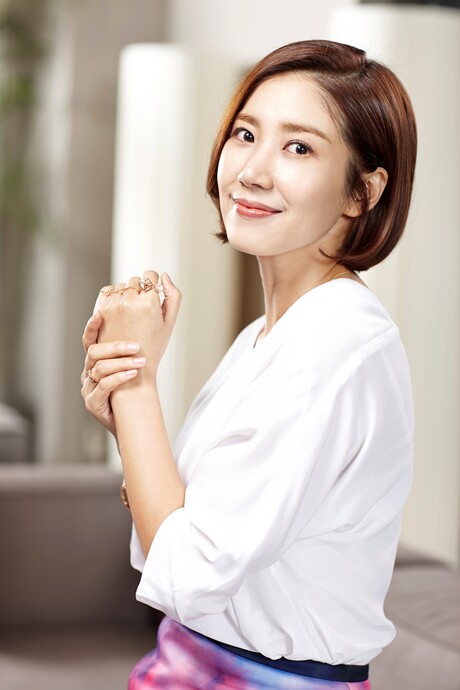Korean lacquer artist Kim Deok-han is revealing profound connections between past and present through his meditative art-making process, demonstrating how traditional materials can express contemporary philosophical concepts. His latest solo exhibition, "Overlaid: Layered Time, Forms of Memory," showcases how multiple layers of lacquer can coexist on a single surface, much like human experiences accumulate to form our present identities.
In traditional East Asian painting, when ink is applied to hanji (Korean mulberry paper), it seeps into the fibers and becomes one with the paper itself. Kim's lacquer works embody this same principle through his unique material approach. Despite applying multiple layers of lacquer, they don't build up but instead merge into a single, unified surface through repeated sanding with sandpaper.
"You can touch it here, if you would like. I layered black, yellow, green, black again and white. But these lacquer layers exist on the same flat surface," Kim explained while pointing to one of his works during an interview on October 30 at Whitestone Gallery in Seoul. "The past isn't beneath and the present isn't above; past and present coexist on a single surface. Isn't that just like who we are today? We are the accumulation of past emotions, experiences and memories that together make up our present selves."
Kim works with "ottchil," the Korean term for lacquer, which was traditionally used for decorative techniques on fine lacquerware or mother-of-pearl inlay. Raw lacquer is collected through notches cut into lacquer trees (Rhus), which grow only in East Asia and naturally produce a dark tone. The artist mixes color pigments into this raw lacquer to create his distinctive medium.
The current exhibition represents Kim's first solo show in Korea in five years, following his previous exhibition at the Lee Ungno Museum where he was selected as a promising artist. A total of 56 works are displayed across three floors of the Whitestone Gallery, demonstrating the breadth of his artistic exploration.
Kim's process is both labor-intensive and time-consuming. He applies approximately nine layers of pure lacquer, followed by four to five layers of colored lacquer, over wood or aluminum panels covered with linen. Then the real work begins: he repeatedly sands the surface with sandpaper. This process typically takes six to twelve months, as each colored layer requires complete drying time before the next can be applied.
"Sometimes, when I scrape the surface, it peels beautifully; other times, it doesn't," Kim noted. "It depends on so many factors: the amount of lacquer, the pressure of my hand, and so on. It's not something I can control a hundred percent. So this work is about letting chance become inevitability."
The exhibition features Kim's first monumental installation work, "Division Series No. 2025," which stretches 12 meters in length and 6 meters in height. This massive piece transforms the gallery's second floor into an immersive spatial experience, allowing visitors to be surrounded by his layered time concept.
Some works in the exhibition were intentionally "wounded" by the artist in moments of creative breakthrough. Kim recalled finishing one piece through the usual process of repeatedly layering lacquer, then one day pressing down hard with extremely rough sandpaper that he "should never have used." As he did this, the underlying layers were suddenly exposed, raw and honest, and he felt strangely relieved.
"I had been carefully sanding to glimpse what lay beneath, but at that moment, I realized I could express it all through a single instant – it was like a moment of 'chalna,'" he explained. The Korean word "chalna" stems from a Buddhist term representing the fleeting moment in which all phenomena arise and disappear, emphasizing the impermanence of everything that exists.
"Overlaid: Layered Time, Forms of Memory" opened on October 25 at Whitestone Gallery in Seoul and will run through December 7, offering visitors an opportunity to experience Kim's unique exploration of time, memory, and traditional Korean materials in contemporary art.








